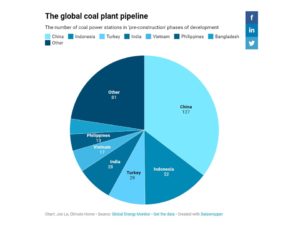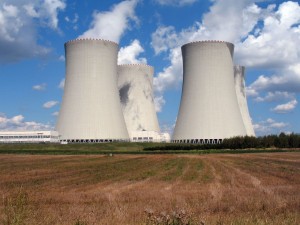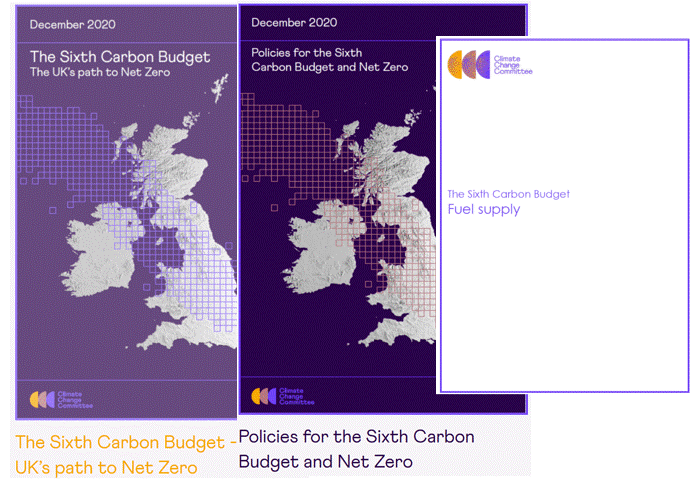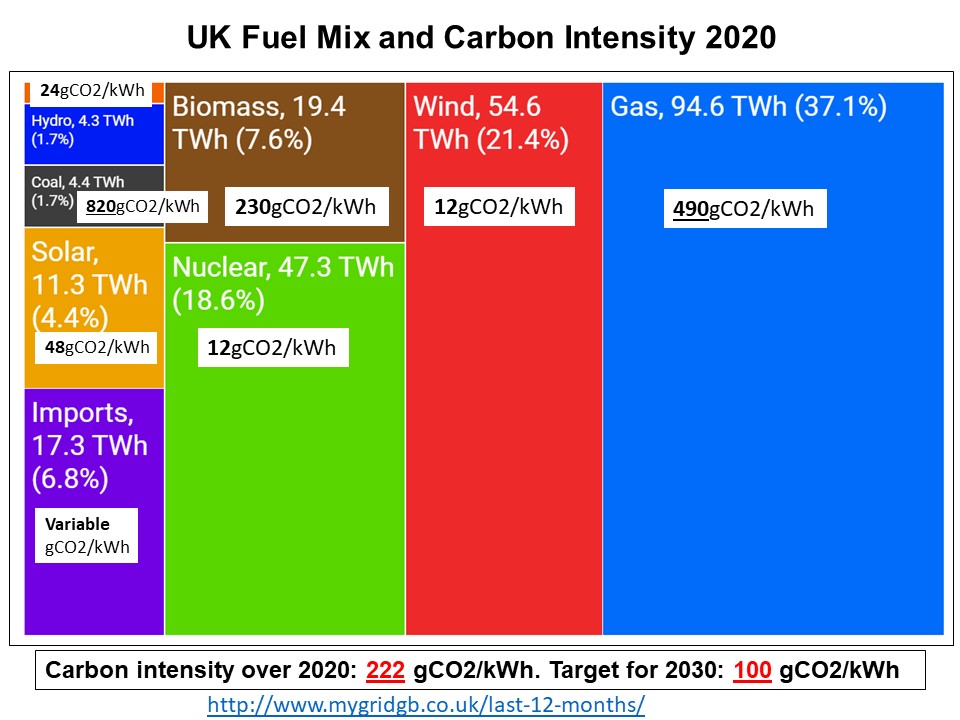 (The Carbon Intensities come from the Median values from IPCC 2018 report annex iii page 7)
(The Carbon Intensities come from the Median values from IPCC 2018 report annex iii page 7)
To switch to a supplier with the fuel mix you want see Switch your Electricity.
Pathway to more electricity and very low carbon electricity
Electricity increase needed by 2050. UK electricity generation must increase threefold to provide for the move away from gas for heating and oil for transport. The CCC report shows the estimated increase in TWh by 2050.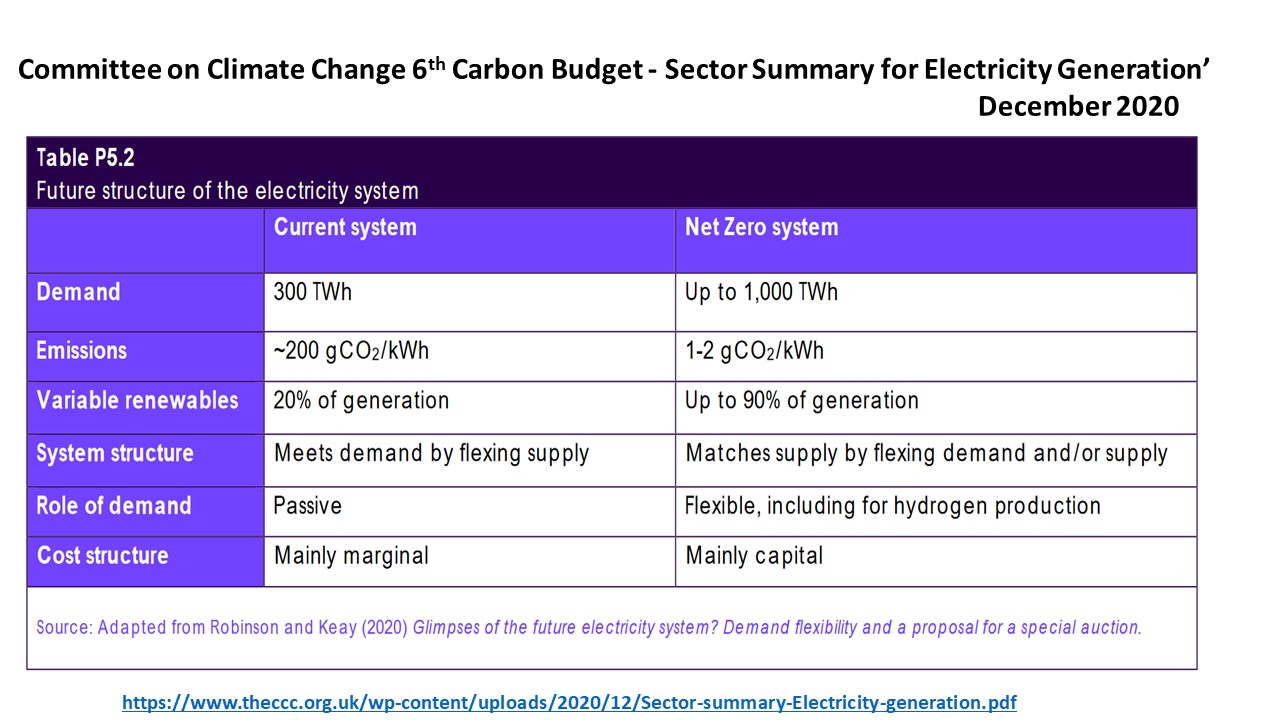
Decrease in carbon. So clearly coal, and then gas, must be phased out and replaced with the low carbon renewable sources. The CCC targets for carbon intensity across this period in the CCC’s Climate Change’s Sector on Electricity December 2020 are:
• Ave 220 gCO2/kWh in 2019
• 50 gCO2/kWh in 2030
• 10 gCO2/kWh in 2035
• 2 gCO2/kWh in 2050.
High Carbon Fuels - to go soonest
-
 UK electricity 2020: 1.7%
UK electricity 2020: 1.7%
Lifecycle Emission: 820g/CO2 kWhHORRENDOUS CARBON INTENSITY, POPULAR AMONGST CLIMATE DENIERS
Global Damage Powering Past Coal reported in 2019 that “the IEA found that CO2 emitted from coal combustion was responsible for over a third of the 1°C increase in global average annual surface temperatures above pre-industrial levels. This makes coal the single largest source of global temperature increase.” In May 2019, UN chief Antonio Guterres urged the world: “Stop building new coal plants by 2020.”
But mining and burning is still increasing across the World, with 359 planned coal power stations across the world. Climate Change News published Who will build the world’s last coal plant? in Oct 2020.
Governments supporting coal. The iisd reported that the “G20 governments provided $584 billion annually (2017–2019 average) via direct budgetary transfers and tax expenditures, price support, public finance, and state-owned enterprise investment for the production and consumption of fossil fuels at home and abroad.”
Banks funding coal. Banking on Change’s Fossil Fuel Finance Report 2020 tracks all the banks that finance fossil fuels including coal mining and coal power. P66 “Financing for coal mining is still dominated by the Chinese banks, which don’t have policies to curb this support.” with Morgan Chase as the worst US bank and Credit Suisse as the worst European bank. For Coal power: “Many banks profiled in this report have tightened their restrictions on financing coal plants in the past year”, with icbc as the worst bank, Citi as the worst US bank and Barclays as the worst European bank.
Closure plans. Powering Past Coal reports that “One third of the OECD’s total coal capacity has now been scheduled to close by 2030 through retirement commitments and phase-out policies.”
In the UK Coal accounts for “23% of emissions but only 5% of generation” according to the CCC’s 2020 Sector report on Electricity Generation.
Use of coal in the UK has decreased over the last few years, according to the CCC report, “since the introduction of the carbon price floor in 2013, alongside air quality legislation, initiated the phaseout of coal-fired generation.” (Page 7) and “a combination of factors, including EU-wide regulations on air quality, carbon pricing, and retirement of old coal power stations” (Box P5.1) page 54
New UK Coal. Another coal mine was even being approved in Jan 2021 in the UK in Cumbria “The secretary of state’s power to call in a case will be used very selectively, and in general only if planning issues of more than local importance are involved.” The CCC listed reasons why this was bad in Jan 2021, including “this decision gives a negative impression of the UK’s climate priorities in the year of COP26.“
-
 UK electricity 2020: 37.1%
UK electricity 2020: 37.1%
Lifecycle Emission: 490g/CO2 kWh
BEIS has cost of new by 2030: £99MW (£87MW with carbon capture)HIGH CARBON, HIGHLY SUBSIDISED, CHEAP FOR HEAT
Gas is a high carbon intense fuel, largely used for heating properties, and needs to be replaced or decarbonised.
Replace or decarbonise? Owen Bellamy CCC explains the recommendations for electricity generation from gas at the sixth carbon budget launch. At 19.8 mins in Owen explains that the CCC says that the UK should phase out unabated gas by 2035 and produce a strategy during 2021.
 The Green Gas Book was published in 2016 so it is unfortunate that, by 2021, the conclusions about adapting the existing gas supplies and using hydrogen and bio-fuels had still not been converted into strategies and policies. Gas Retropia reprises the publicity for householders when 20 million appliances were converted across Great Britain, over ten years from 1967. A large exercise, but one that needs to be repeated now to adapt all properties to low carbon heating to act on the climate emergency.
The Green Gas Book was published in 2016 so it is unfortunate that, by 2021, the conclusions about adapting the existing gas supplies and using hydrogen and bio-fuels had still not been converted into strategies and policies. Gas Retropia reprises the publicity for householders when 20 million appliances were converted across Great Britain, over ten years from 1967. A large exercise, but one that needs to be repeated now to adapt all properties to low carbon heating to act on the climate emergency.Hydrogen and Bio-energy in the Gas supply. The CCC’s Sector summary for Fuel Supply explains how gas and oil production from the North Sea is expected to decline, and recommends ways of redeploying those who lose their jobs. The report goes into extensive details behind the role of Hydrogen and bio-energy in reducing the carbon intensity of the gas grid supply. It links to Hydrogen in a low carbon economy that assesses the potential role of hydrogen in the UK’s low-carbon economy.
2023 decarbonisation target. The Nov 2020 10 Point Plan – a Green Industrial Revolution has as a target for 2023 “lower carbon heating and cooking with no change in experience for domestic consumers through hydrogen blends and reducing the emissions of the gas used by up to 7%” It is notable that this UK policy has no mention of the previous policy for fracking gas.
Low Carbon Fuels - the good guys to be ramped up
-
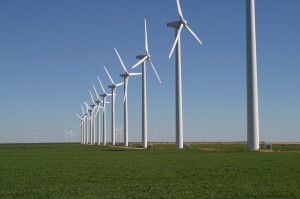 UK Electricity 2020: 21.4%
UK Electricity 2020: 21.4%
Lifecycle Emission: 12g/CO2 kWh for offshore, 7g/CO2kWh for onshore
BEIS has cost of new by 2030: £47MW offshore, £45MW onshorePLENTIFUL, CHEAP, VARIABLE
For a real time view of electricity being generated now see Winderful.
Wind is a great low cost source of energy at minimal cost once in place. The challenge is to track wind power, store surplus when very windy for later use. There are people who hate wind turbines, eg offshore near Donald Trumps golf course and often onshore where local people object.
Offshore wind. Government policy in the Nov 2020 10 Point Plan – a Green Industrial Revolution is “by 2030, we aim to produce 40GW of offshore wind, including 1GW of innovative floating offshore wind in the windiest parts of our seas. The UK is home to the world’s first 2 floating offshore windfarms and by 2030 we intend to have scaled this twelvefold….. “
Onshore wind In the Energy White paper of Dec 2020 the Government says that “onshore wind and solar will be key building blocks of the future generation mix, along with offshore wind.“ This is a major change of policy, reported by Edie Energy in March 2020 (paywall) “The UK Government has reversed its decision to effectively ban onshore wind, solar and energy storage from competing in the Contracts for Difference (CfD) rounds,”. John Sauven of Greenpeace said: “The government now needs to engage with local communities in order to get large amounts of onshore wind and solar off the ground.“
Wind and a constant supply. in the Nov 2020 10 Point Plan – a Green Industrial Revolution “To integrate clean technologies like offshore wind, we must transform our energy system, building more network infrastructure and utilising smart technologies like energy storage.” The CCC’s Sixth Carbon Budget (p135) notes that we currently use 3GW of pumped hydro storage for rapid demand, which is being increased to 12GW. Other means of coping with low wind generation includes producing and storing hydrogen and 18GW of battery storage. Superhighways bringing electricity from windy parts eg Scotland is also part of the solution according to The Guardian Nov 2020.
-

Blackfriars Bridge solar roof UK electricity 2020: 4.4%
Lifecycle Emissions: 48g*/CO2 kWh (18g/CO2 kWh for utility scale)
BEIS has cost of new by 2030: £39MW for utility scale sites, up to £107MW for small, roof size sitesPREDICTABLE, SAFE, EVERYWHERE, DAYTIME ONLY
Solar PV produces no carbon emissions, whilst generating. The minimum kWh generated from solar panels can be accurately predicted for every hour of the year for every co-ordinate on the earth. Solar Sheffield has a quick tool to calculate expected kWh for every month for any solar proposal. When solar generation is used to fuel vehicles, and to manufacture products their emissions plummet.
Solar surplus. It is the peak, particularly on sunny summer days, that is unpredictable and the CCC recommendation is for the surplus in summer to be used to produce hydrogen for transport or for heat in winter. The solution available today involve ‘demand management’. Octopus Energy are leaders in encouraging ‘powerloop’ vehicle to grid (V2G) tariffs where electric vehicle owners charge on a cheaper tariff overnight, use their vehicle and then discharge their batteries at the peak evening time.

Source: Greenwatt Sustainable Solutions Solar shortfalls. In winter and during the dark the predictable lack of solar electricity can be managed by releasing storage and by reducing demand. Octopus Energy also offers ‘agile’ tariffs like ‘Big Switch On’ where customers are PAID to use energy when there is a surplus, whilst using it for purposes such as water heating and car charging.
*Carbon from making panels. Only Natural Energy says that “it has been estimated that around six months are needed for a solar panel to produce the energy required to clear the carbon dioxide emitted to produce it” and continues that this assumes high carbon manufacturing is used eg using coal power. So, using power from solar panels to make solar panels, will remove this as a concern.
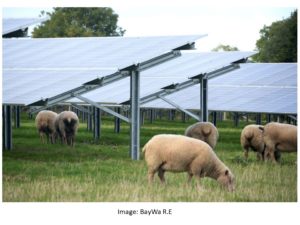 Loss of land from solar farms. If productive farmland were covered in solar panels it would reduce food production. However, Only Natural Energy says that the Centre for Ecology and Hydrology concludes that “the shade under the panels can allow crops that cannot survive in full sun to be cultivated. In addition, water losses can be reduced and water could be collected from large solar panel surfaces and used for crop irrigation.” Indeed such land can be very suitable for grazing and other crops and biodiversity. BRE and Solar Power Portal has more in depth information about the biodiversity opportunities and Solar Century gives a case study of solar and bumblebees.
Loss of land from solar farms. If productive farmland were covered in solar panels it would reduce food production. However, Only Natural Energy says that the Centre for Ecology and Hydrology concludes that “the shade under the panels can allow crops that cannot survive in full sun to be cultivated. In addition, water losses can be reduced and water could be collected from large solar panel surfaces and used for crop irrigation.” Indeed such land can be very suitable for grazing and other crops and biodiversity. BRE and Solar Power Portal has more in depth information about the biodiversity opportunities and Solar Century gives a case study of solar and bumblebees.Aesthetic objections. The planning rules on solar panels are clear that they should not be installed on roofs in Conservation Areas where they can be seen. However they can be installed on the non road side, conservatories, sheds etc. They can also be integrated into solar tiles eg GB Sol tiles.
UK plans. The only mention of Solar electricity in the UK’s Ten point plan is to ‘ support up to twice the capacity of renewable generation in the next CfD [Contracts for Difference auctions] round, with onshore wind and solar projects eligible to bid for CfD contracts’ which is notable because previous CfD rounds have excluded solar projects. The CCC Sector summary – Electricity Generation says at page 13 ‘the UK has the potential to deploy capacity to generate ………………. 130-540 TWh (145-615 GW) of solar power.” However the CCC’s Sixth Carbon Budget Balanced Pathway is based on Page 37 ‘Solar generation increases from 10 TWh in 2019 to 60 TWh in 2035 and 85 TWh in 2050.’
UK Barriers to expansion.
- The ‘Feed In Tariff’ subsidy for installing solar capacity was removed in 2019 when large scale solar became financially viable. It then became difficult to market domestic solar as money saving. There are other incentives such as a desire to help reduce carbon emissions, or the ability (when accompanied with batteries) to maintain electricity during grid power cuts but the messages about these have not been publicised.
- VAT on solar panels was raised from 5% to 20% in 2016, to conform with EU policy, making them much more expensive for non VAT registered individuals and community groups. According to Energy Live News 17 Conservative MPs joined Labour to appeal for the removal of this reduced rate to be stopped.
- Business rates on solar plant retrospectively applied. The Solar Trade Association explains how this works and the effects eg private schools are exempt due to charitable status, whereas state schools have to pay more in rates. `
-
 UK electricity 2020 1.7%
UK electricity 2020 1.7%
Lifecycle Emission: 24g/CO2 kWh
BEIS has cost of new by 2030 of £88MWPREDICTABLE, LOCAL, STORAGE AND RELEASE
Hydro uses the natural power of rain and water to generate electricity, traditionally with water wheels, but also with large or small dams that can store and release water, providing quick electricity capacity. The CCC’s Sixth Carbon Budget (p135) notes that we currently use have 3GW of pumped hydro storage for dispatchable flexibility, which is being increased to 10GW.
The British Hydro Org says that “The UK generated around 1.65GW of installed electrical generating capacity in 2012. A significant proportion of this was from large scale hydro-electric schemes. There are four large scale conventional hydroelectric power stations and large run-of-river schemes in the UK which produce approximately 5,000GWh per annum. The potential for further practical and viable hydro-electricity power stations in the UK is estimated to be in the region of 146 to 248 MW for England and Wales, and up to 2,593 MW for Scotland.“
Types of Hydro. The British Hydro org details the different types of Hydro:
- Micro hydro – up to 100kW capacity and includes pico, micro and mini.
- Small-scale hydro -100kW to 5MW capacity
- Larger scale hydropower stations (run-of-river, dams or reservoir storage) above 5MW. “Large scale hydro schemes utilise dams that impound water in a reservoir, creating a large head of water with significant stored potential energy. The reservoir feeds large turbines and generators that are usually located within the dam itself and can rapidly respond to spikes in demand for electricity.”
- Pumped Storage – above 5MW. “Pumped storage is a net user of power – but used in conjunction with other forms of renewable generation to pump the water back up to the top of the reservoir, this can help to resolve intermittency issues associated with other renewable technologies.”
- Waterwheels – up to 20kW with different types of waterwheels described
-
UK electricity 2020 0%
Lifecycle Emission: 38g/CO2 kWh
BEIS has cost of new by 2030 of £124MWPREDICTABLE, FEW LOCATIONS
Geoscience has good information about the different types of geothermal in the UK and locations.
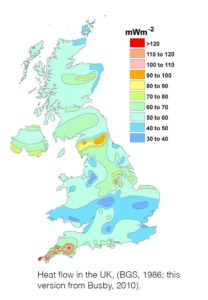 It details the ways of taking heat from the ground as:
It details the ways of taking heat from the ground as:- Ground Source heat pumps (GSHP)
- Mine water
- Boreholes
- Deep Geothermal
It is the deep geothermal that could provide electricity. The British Geological Survey keeps up to date with trials. The UK Government has adopted the term deep geothermal energy to refer to heat resources derived from depths of >500 m.
The video above is from the University of Plymouth which explains the technology: “Deep geothermal is when heat from the Earth itself is used to produce energy, by drilling wells into hot rocks far underground and pumping water through an engineered or ‘enhanced’ system.
The naturally hot granite heats up the water, which is then pumped up the well. When the hot water reaches the surface, the heat drives a turbine. This turbine generates electricity, which is fed into the Western Power network. The now cool water travels back down the other well to continue the cycle.“
The trial is the United Downs Deep Geothermal Power project near Redruth in Cornwall, operated by Geothermal Engineering Ltd and due to provide electricity to Western Power during 2021.
Electricity from the Sea – Tides and Waves.
Minesto’s Tidal Kite in Faroe Islands
A coalition of 25 ocean-faring nations, called Ocean Energy Systems says that “By 2050, ocean energy has the potential to have deployed over 300 GW of installed capacity.” And that “By 2050, ocean energy has the potential to have created 680,000 direct jobs and saved 500 million tonnes of CO2 emissions.” Ocean Energy encompasses tides, waves, ‘salinity gradient’ and ‘ocean thermal energy’ technologies.
However, the Committee on Climate Change Nov 2020’s Sector Summary for Electricity Generation (p28) is not optimistic about tapping into that potential from the UK “Technologies such as tidal and wave that have not been commercialised at large scale could provide predictable power to a variable renewables-driven system. However, costs would need to decrease substantially to be competitive against other technologies.“ The Ocean Energy Cost Assessment agrees, whilst suggesting they may become viable “tidal and wave needs to demonstrate further cost reductions.”
Regardless – Wales and Scotland have optimistic companies working with both Tides and Waves. Ocean Energy describes UK activities. In Scotland, for instance, the European Marine Energy Centre (EMEC) Ltd “is the first and only centre of its kind in the world to provide developers of both wave and tidal energy converters – technologies that generate electricity by harnessing the power of waves and tidal streams – with purpose-built, accredited open-sea testing facilities.” and ORE Catapult claims to be “The UK’s leading technology innovation and research centre for offshore renewable energy.”
The Tide and Wave stripes below have more on ongoing trials, projects and costs.
-
 UK generation 2020: 0%
UK generation 2020: 0%
Lifecycle Emission: 17g/CO2 kWh
BEIS has cost of new by 2030: £205MWPREDICTABLE, RENEWABLE, PERPETUAL
The Guardian in July 2018 said that “Tidal power is the only renewable source derived from the moon. Now an extraordinary array of devices promise to unlock this vital energy potential”
Trillion explains the potential of Tidal Energy. “There are two main types of tidal:
- Tidal stream uses wind-type turbines located in the water column. Energy is created directly from the tidal stream currents.
- Tidal range uses offshore barrage or lagoon constructions to harness the potential energy of water during high tides. Stored water is released in controlled fashion, rotating turbines and generating energy between tides.” For instance the Swansea Tidal Lagoon project would have “A tidal lagoon is a ‘U’ shaped breakwater, built out from the coast which has a bank of hydro turbines in it. Water fills up and empties the man-made lagoon as the tides rise and fall. We generate electricity on both the incoming and outgoing tides, four times a day, every day.”
Some Examples of UK Tidal projects
Swansea Tidal lagoon.
- In Jan 2017 a review by Charles Hendry recommended that the Swansea Tidal Lagoon project go ahead and included: “The potential impact on consumer bills of large scale tidal lagoons “appears attractive, particularly when compared to nuclear projects” in the long term.” It was designed to “comprise 16 hydro turbines, a 9.5km breakwater wall, generating electricity for 155,000 homes for the next 120 years.”
- In June 2018 the Government rejected the plans, which would have required guaranteed funds if the electricity cost more than wholesale prices. “The capital cost for the lagoon, per unit of electricity generated, would be more than three times as much as the Hinkley Point C power station ”The financial analysis was disputed by Hendry saying that “The offshore wind turbines will have to have been replaced three or four times during the lifetime of a lagoon; a nuclear plant would only last half as long,”
- In December 2019 Tidal Power Plc was formed to progress the project. “Its primary objective is to take the Swansea Project to financial close with the secondary aim of subsequently delivering further cost competitive tidal lagoons as a strategic large scale renewable energy solution to the UK’s energy requirements.”
- In July 2020 The company announced that, following share raising it has satisfied the conditions from Swansea to maintain its development order consent, as it continues to be prepared to complete the Swansea Tidal Lagoon, and further lagoons.
The North Wales Tidal Energy company.
- In Sept 2020 North Wales Tidal Energy reported that its tidal project “would strengthen the region’s sea defences in a high flood risk area and, at a forecast £7 billion cost, would come in at less than 60% of the projected budget of the Wylfa Newydd project.” [the abandoned local nuclear project]. The project at Colwyn Bay, St Asaph and Rhyl intends to “find an integrated solution that maximises both the highest level of power generation from the scheme and the number of communities that can be protected from rising sea levels and other adverse effects of global climate change.”
Deltastream in Pembrokeshire.
- In Dec 2015 Wales Online reported on the deployment of a DeltaStream device in Pembrokeshire “that will demonstrate tidal grid-connected power.” DeltaStream used a turbine to capture the energy from underwater tidal currents. However in Dec 2016 Wales Online subsequently reported that Delta Stream had gone into administration after only 3 months, following problems with the sonar to detect marine animals such as seals and dolphins.
Minesto’s Tidal Kites
- Holyhead Deep Wales. In 2018, Minesto succesfully commissioned its first commercial-scale system “With the 0.5MW DG500 device, Minesto could verify functionality, validate offshore operations procedures and generate electricity for the first time with a commercial-scale unit. “
- Minesto’s Tidal Kite in Faroe Islends. In Dec 2020 it reported “As a part of the ongoing commissioning work of its DG100 tidal kite system in Vestmannasund, Faroe Islands, leading marine energy developer Minesto has reached the milestone of delivering electricity to the Faroese grid facilitated by the Power Purchase Agreement with the utility company.”
-
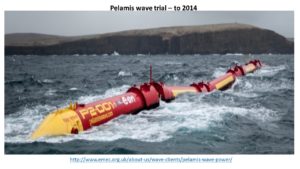 UK generation in 2020 0%
UK generation in 2020 0%
Lifecycle Emission: 17g/CO2 kWh
BEIS has cost of new by 2030: £232PLENTIFUL, PERPETUAL, VARIABLE
What are wave energy technologies?
Ocean Energy Systems describes a wide variety of wave energy technologies, categorising them broadly as:
- Oscillating water column (with air turbine)
- Oscillating bodies (with hydraulic motor, hydraulic turbine, linear electric generator)
- Overtopping (with a low-head hydraulic turbine)
and noting the main disadvantage of wave power being its variability (although patterns of seasonal variation can be recognized).
In Nov 2020 Wave Eenergy Scotland (WES) said that “Wave energy technology is currently being demonstrated around the world and it is anticipated that the first pre-commercial arrays will be deployed over the next five years. The global market for wave energy is vast with estimates of more than 200GW by 2050. This follows WES “Analysis by ORE Catapult suggests that wave energy could have a net positive contribution to the UK economy of £4 billion and support 8,100 jobs by 2040.”
Wave Energy Scotland (WES) was formed in 2014 at the request of the Scottish Government and is a subsidiary of Highlands and Islands Enterprise. The aim of WES is to ensure that Scotland maintains a leading role in the development of marine energy.
In March 2015 Innovate UK announced that “Businesses can now bid for a share of £7 million from Wave Energy Scotland (WES) as part of its long-term programme of support for commercialisation of the wave energy sector. ”
In July 2020 WES announced a £14m scheme to develop quick connection systems. “Projects led by Apollo, Blackfish Engineering Design, Nova Innovation and Quoceant secure funding from Wave Energy Scotland.”
Case study of a Wave pioneer
the European Energy Marine Centre (EMEC) reported on Pelamis Wave Power
- In 2004 Pelamis demonstrated their first full-scale prototype, the P1
- In July 2010 the first P2 consisting of five connected sections which flex and bent in the waves. purchased by Eon, arrived in Orkney
- In 2013 it was returned to Pelamis
- In November 2014 Pelamis went into administration. Wave Energy Scotland now owns their assets and IP and the remaining P2 now owned by Orkney Islands Council:
Necessary Evils?
-
% biomass UK 2020: 7.6%
Lifecycle emission: 230g/ CO2kWh (dedicated). But UKWIN has 694gCO2/kWh
BEIS has costs of new by 2030: £97 (Energy from waste with CHP), £142 (Anaerobic), £166 (CHP), £205 (with CCS)SAVES SOME EMISSIONS FROM ROT, PREVENTS SEQUESTRATION FROM TREES
What is Biomass?
The New Energy Foundation (NEF) defines biomass as “Biomass is a collective term for all plant and animal material. A number of different forms of biomass can be burned or digested to produce energy.” For instance:
- wood can be used for the production of electricity, with a combustion plant (where the material is burned to produce steam).
- energy crops grown specifically for the production of energy
- municipal and industrial waste – inc waste food and waste wood
- by-products of conventional agricultural activity eg straw, slurry ‘digested’ to produce methane in a process known as anaerobic digestion(for both heat and electricity.)
Where biomass produces heat as well as electricity it is called Combined Heat and Power (CHP). Where the carbon emissions from burning biomass are captured and stored it is called Biomass Energy Carbon Capture and Storage (BECCS) or CCS.
Is Biomass renewable?
“Biomass is a renewable fuel as long as it comes from sustainable sources such as: forest residues, tree surgery waste, energy crops, agricultural waste and other wood residues (such as sawdust)“, according to NEF. Biomass from dead wood can be counted as ‘renewable’ where new trees are grown and where the emissions from rot are avoided.
Planting new trees replaces some sequestration but only over many years, whilst the emissions from burning the pellets are being added to the greenhouse gases in the atmosphere during that time. Drax calls its biomass from forests ‘renewable’ despite the long delay in replenishing tree sequestration “Renewable energy is produced from a resource that is infinite or can be replenished on a human timescale, such as the sun, wind, water or sustainably managed forests.”
The Guardian says that a flaw in the EU renewable energy directive of 2009 meant that woody biomass was categorised as renewable, even if it came not just from wood residues or waste, but consisting of pellets made from whole trees. Such deforestation reduces sequestration of carbon and long journeys to UK power stations also make it high carbon.”
The UK accepts all these types of biomass as ‘renewable’ for all official purposes eg BEIS’ Energy Trends Dec 2020 with Bioenergy as renewable. And electricity suppliers classify electricity from biomass as ‘100% Green’ when they are making claims to be green.
UK Support for Biomass.
Biomass for hydrogen to even out peaks and troughs. The UK’s 10 Point Plan – a Green Industrial Revolution of Nov 2020 advocated the use of bioenergy for the production of low-carbon hydrogen for storage, and release in times of shortage, “Hydrogen can be produced in the UK in a range of low-carbon ways…. or with CCS applied to fossil gas or biomass.”
The CCC says in“ Sector Summary Fuel Supply the details of the government’s biomass strategy, due in 2022, will be “critical”. …. It assumes that “80% of bioenergy used in the UK will need to be linked to CCS by 2050” so a “significant investment programme will be required, with construction of new bioenergy facilities with CCS occurring in the late 2020s and early 2030s, across multiple end-use sectors – transport fuels, hydrogen, manufacturing and power”. “
It is clear (p26) “Biomass should only be used in energy applications with CCS (i.e. BECCS)” and (p10) “BECCS has the net effect of removing CO2 emissions from the atmosphere.”
The Carbon Brief’s The UK must cut emissions by 78% to be on course for net zero of Dec 2020 says “without safeguards, large-scale harvesting of biomass can both be high-carbon and have substantial impacts on the provision of food, biodiversity and other sustainability concerns”. Strengthened governance is needed to manage these risks, the CCC says.”
Drax biomass plant example
Drax Power station in North Yorkshire has 4 units using biomass pellets as feedstock and 2 burning coal, due to cease in early 2021. It is the largest biomass burning plant in the world.
UK Subsidies for Drax
Biofuelwatch has a factsheet Biomass subsidies are a huge waste of money that calculates that as “ Drax Power Station alone received £789.5 million. That’s £2.1 million a day or £28.60 per household per year.
Biofuelwatch quotes Duncan Brack, associate fellow at the London-based thinktank Chatham House. “We’re effectively paying to increase carbon emissions in the atmosphere, which is an absurd use of public money.” Biofuelwatch claimed that, “in 2019, Drax alone emitted 12.8 million tonnes of CO2 from burning wood. This is more than the total amount the UK should be reducing emissions by every year to meet its carbon budgets! “
Drax wood pellets low carbon?
Drax has many statements on its web site that claim that their feedstock is “sourced from established, responsibly managed working forests in the USA, Canada, Europe and Brazil.” And its complementary web site Forest Scope says the feedstock “is largely made up of low grade wood and low value residues produced as a bi-product of the production and processing of higher value solid wood products (e.g. saw-timber for construction and furniture). It lists a number of different forest certification programmes, from different regions.
Conversely a BBC investigation revealed in May 2013 that some of the pellets produced by Drax’s main US supplier had come from clearcut ancient swamp forests in the southern US, and Enviva featured above is a Drax supplier. The Guardian, in Jan 2021 reported, with satellite imagery, on the journey from forests in Estonia, through Riga to UK power stations including Drax.
So should biomass be classified as renewable’?
Energy from Waste (EfW) – the Edmonton Incinerator example
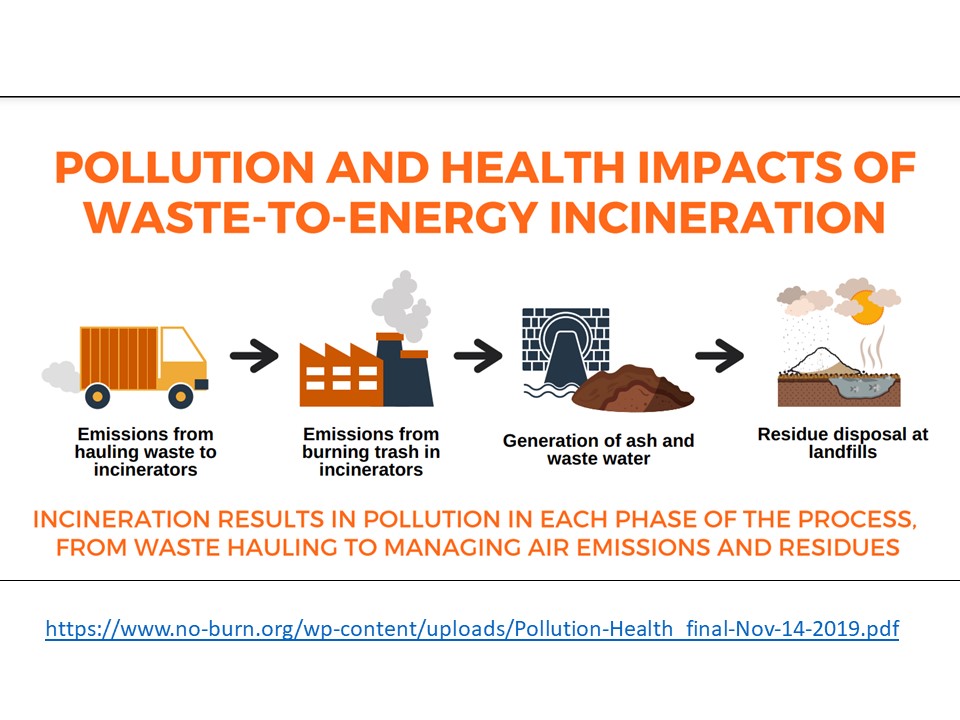 The Best Use of waste table in the CCC’s Sector Summary Fuel Supply (p31) says that “Savings in other applications are more modest – particularly energy-from-waste power plants, as UK electricity is now lower carbon than other vectors. Use of waste in energy-from-waste plants is still just about better than landfilling today, but other routes are able to achieve higher abatement in the near-term.“
The Best Use of waste table in the CCC’s Sector Summary Fuel Supply (p31) says that “Savings in other applications are more modest – particularly energy-from-waste power plants, as UK electricity is now lower carbon than other vectors. Use of waste in energy-from-waste plants is still just about better than landfilling today, but other routes are able to achieve higher abatement in the near-term.“The Carbon Brief’s The UK must cut emissions by 78% to be on course for net zero of Dec 2020 says “the CCC warns that the growth in EfW plants could see the sector’s emissions rise if they continue to be built without the option of CCS available.”
Edmonton’s new energy recovery facility – waste to heat and electricity
North London Heat and Power Project (NLHPP) is the North London Waste Authority’s (NLWA) project for a new waste and incineration centre in Edmonton for the north London boroughs of Barnet, Camden, Enfield, Hackney, Haringey and Islington and Waltham Forest. In April 2020 NLHPP announced “The new Energy Recovery Facility (ERF) will safeguard against landfill use in the future. It will treat non-recyclable waste as a resource for society – generating low-carbon heat and power for up to 127,000 homes.” Its FAQs says that “The current facility generates enough energy to supply 80,000 homes.” The new facility will “be capable of exporting power to the national grid and providing heat to the Meridian Water Heat Network”
Carbon intensity of the new facility. North London Waste estimates 28,000 tonnes of carbon dioxide equivalents each year. Extinction Rebellion’s rebuttal paper says that, with the capacity to process 700,000 tonnes of rubbish per year they can estimate that the carbon emissions will be roughly 700,000 tonnes.
A Freedom of Information query to confirm carbon intensity was refused because only the Environment Agency holds the data. However, the analysis by UKWIN (p14) concludes from the average of 6 studies it could be 694gCO2/kWh (direct emissions)
The GLA says that “The Mayor has set an initial Carbon Intensity Floor (CIF) target for Edmonton ERF of 400g CO2e/kwh electrical and intends to set a tighter standard of 300g CO2e/kwh electrical by 2030.”
Extinction Rebellion’s opposition to the Edmonton Incinerator includes evidence of over capacity, air pollution, discouragement of recycling and they dispute the value for money claims.
Anaerobic Digestion
East London Biogas is in Dagenham and “The anaerobic digestion facility processes up to 35,000 tonnes p.a. of food waste …. to generate enough renewable energy to power approximately 2,000 homes.” Across the UK there are many anaerobic digestors with and without Combined Heat and Power (CHP) to be found on this map. If anaerobic digestion were to provide more electricity (and heat) more food waste would need to collected and the CCC’s Sector Fuel Supply p18 assumes that collection rates for anaerobic digestion rise to 90% by 2030.
-
% Nuclear in 2020: 18.6% Lifecycle Emission: 12g/CO2 kWh]
BEIS cost of new by 2030: in commercial confidence.
LOW CARBON, GENERALLY AVAILABLE, VERY EXPENSIVE
Cost of existing, new and retired Nuclear.
Although BEIS have not published current costs for Nuclear there is a big difference between the cost of existing plants and commissioning new ones.
Existing plants. Leibreich in We need to talk about Nuclear power says that the IEA in Nuclear Power in a Clean Energy System, says that “it estimates that even if you add in the costs of passing a deep safety review every ten years and any necessary upgrades, the resulting power cost would only be $40-55 per MWh.”
New builds. The Intergenerational Foundation’s Toxic Time Capsule quotes £92.4MW strike price (guarantee for the taxpayer to top up above sale price). Since April 2016 this will have increased and the cost of alternatives has plummeted. Transition Highgate’s What are we doing? lists the many ways in which Nuclear is subsidised. The BEIS estimates (p20) just for 2020/21 just for decommissioning waste are £2bn. Carbon Brief in Nov 2020 calculated the cost of £130bn to clean up over the next 120 years.
Nuclear as a reliable baseload
Amory B Lovins Four Nuclear Myths of Oct 2009 discusses the occasions when nuclear units worldwide were unexpectedly unable to produce electricity. “This inherent intermittency of nuclear and fossil-fueled power plants requires many different plants to back each other up through the grid.” He contrasts with solar where minimum generation is completely reliable, and if a solar panel fails it has little effect. But when a large Nuclear power station is out of action, for whatever reason, the UK’s very economy could be in danger.
The concern that (usually) nuclear production is too slow to change is addressed by The benefits of nuclear flexibility in power system operations with renewable energy July 2018 which says that “nuclear power plants are technically capable of flexible operation, including changing power output over time (ramping or load following) and providing frequency regulation and operating reserves.”
Government policy
UK Nuclear power stations, past and present (as at 2019) are listed here, showing the plans and dates to close each. Delivery of new plants is proving to get very delayed and very expensive:
- Hinkley C. Burnham-on-sea.com reported in Jan 2021 that “The plant is now due to open in June 2026 and not in 2025 as planned and will cost between £22bn and £23bn.”
- Bradwell B. The Bradwell B website https://bradwellb.co.uk/ has the timeline from public consultation to construction over several years.
- Sizewell C. As at Dec 2020 the BBC reported the Government was talking to EDF about a new Nuclear power station at Sizewell C which “could generate 3.2 gigawatts of electricity, enough to provide 7% of the UK’s needs.”
The Government policy at December 2020 in the 10 Point Plan – a Green Industrial Revolution at page 12 was to pursue “large-scale nuclear, whilst also looking to the future of nuclear power in the UK through further investment in Small Modular Reactors and Advanced Modular Reactors.“ and “we are announcing up to £385 million in an Advanced Nuclear Fund. This will enable investment of up to £215 million into Small Modular Reactors to develop a domestic smaller-scale power plant technology design“.(p16)
Fusion: – “We are already providing £222 million for the visionary STEP programme (Spherical Tokamak for Energy Production), which aims to build the world’s first commercially viable fusion power plant in the UK by 2040, and £184 million for new fusion facilities, infrastructure and apprenticeships to lay the foundations of a global hub for fusion innovation in the UK.” (p30)
New Nuclear – good or bad?
Proponents, according to wikipedia, “such as the World Nuclear Association and Environmentalists for Nuclear Energy, contend that nuclear power is a safe, sustainable energy source that reduces carbon emissions. Nuclear power opponents, such as Greenpeace and NIRS, contend that nuclear power poses many threats to people and the environment.”
Carbon Brief’s UK can go low carbon at no extra cost say infrastructure advisors July 2018 concludes “Given the balance of costs and risk, a renewables based system looks like a safer bet at present than constructing multiple new nuclear power plants. But a large amount of uncertainty does remain.”
Leibriech in We need to talk about nuclear power July 2019 is aware that “this is not an industry with which you can trust the future of the world’s economy and the planet’s health” but concludes that existing nuclear capacity is cheap and does not incur extra risk. “the overwhelming priority is to keep existing nuclear plants open; when it comes to new plants, the current generation of plant designs won’t cut it on economic grounds; and for goodness sake, let’s get serious about developing SMRs and researching the generation of nuclear technologies that might even follow them.”
-
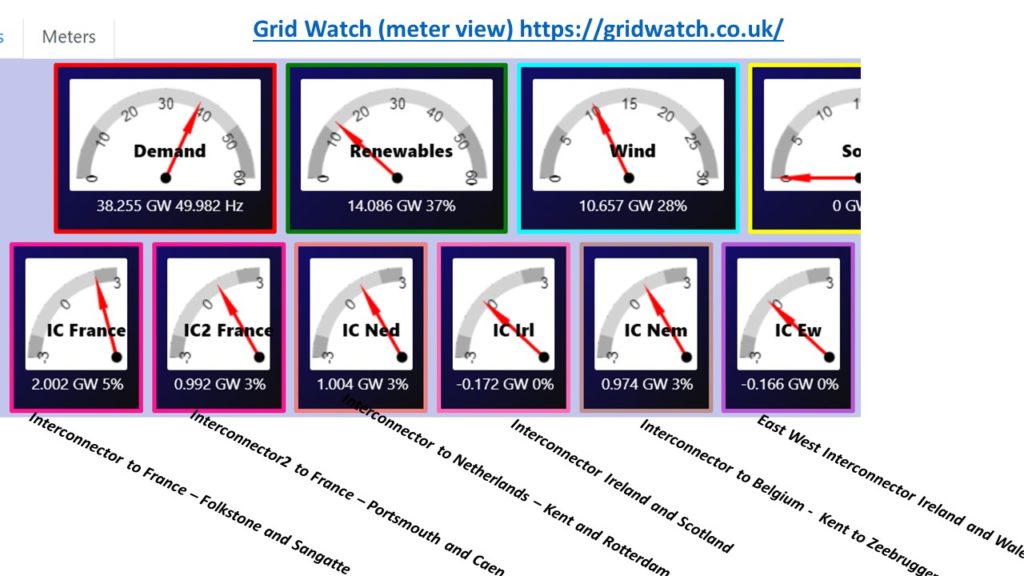 % Imports in 2020: 6.8%
% Imports in 2020: 6.8%
Lifecycle Emission: 273* g/CO2 kWh
BEIS cost of new by 2030: variableVARIABLE CARBON, GOOD BACK UP
Gridwatch’s list of carbon intensity uses the calculation ( CCGT/2 ) +((( Nuclear +Biomass +Wind+Solar )/4)/2) to arrive at *273gCO2ekWh. “There is likely scope to attribute different values to each interconnector as the mix of fuels will differ (ie The French Interconnector will use a high percentage of Nuclear). Only interconnectors importing are added to the total as the co2e produced for exporting is already accounted for under each fuel.“
Discussion of issues in getting continuous supply of low carbon electricity
-
A BBC Radio 4 Programme The Bottom Line hosted by Evan Davis in Feb 2016 contains a good discussion about the direction of UKs power sources. The discussion between Jeremy Leggett of Solar Century, Paul Cowling of RWE Renewables and Juliette Davenport of Good Energy noted that the Paris Agreement aims at power being 100% renewables by the 2nd half of 20th century and included highlights such as:
- Renewable costs are comparable to building NEW gas power stations (and only need subsidies in the short term to become comparable to the cost of power from old stations that have covered their capital costs already).
- Energy gets $5 trillion subsidy each year globally. See IMF report and Subsidies Friend or Foe?
- A complete rethink is required for electricity distribution, now that 1 m homes have PV, and now that 15% of our electricity is from renewables, up from 5% in 2013. (note up to 25% in Q2 of 2015)
- No longer should we be thinking in terms of big centralised power stations with radiating cables to homes. We need to rethink the network, both from and to private premises. PV on individual buildings is cheaper, because it does not need the infrastructure of cables etc.
- Storage is already available, and in the pipeline, so that cars can have spare batteries to store renewable electricity for home, and be available quickly for travel. See Renewable Energy World for update.
Switching on – How Renewables will Power the UK from the Friends of the Earth in May 2017 details current approaches to ‘keeping the lights on’ with renewable power.

